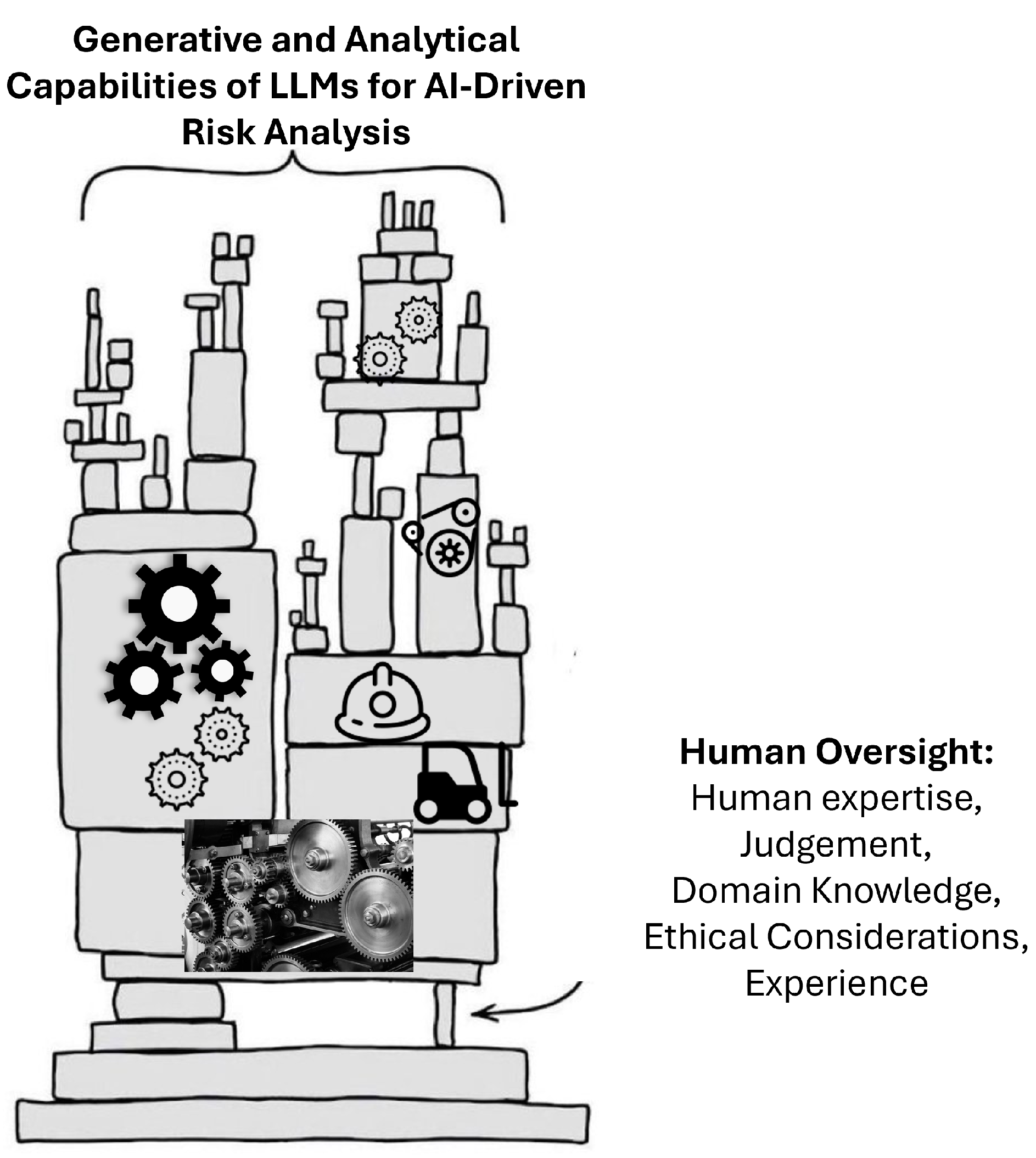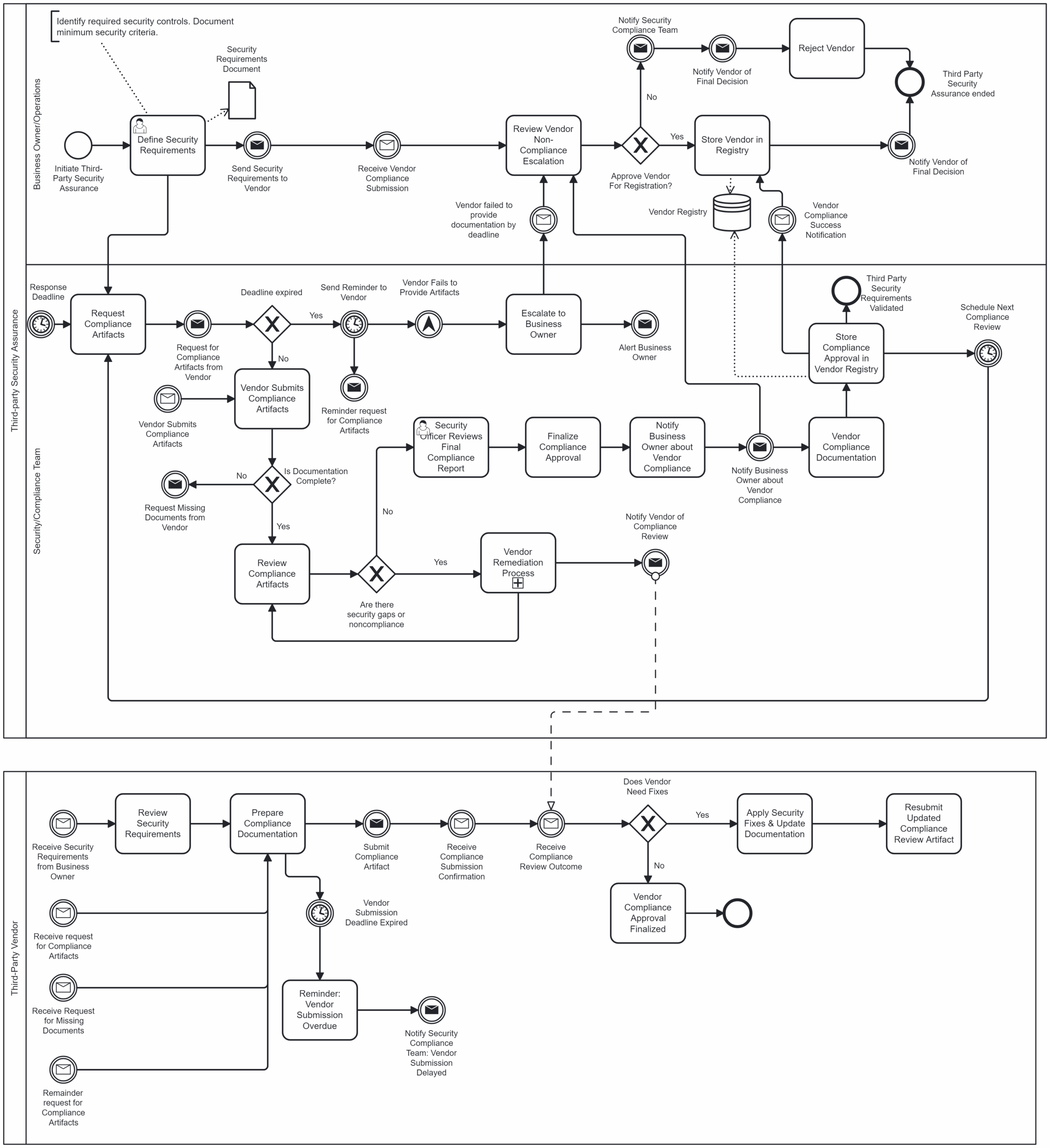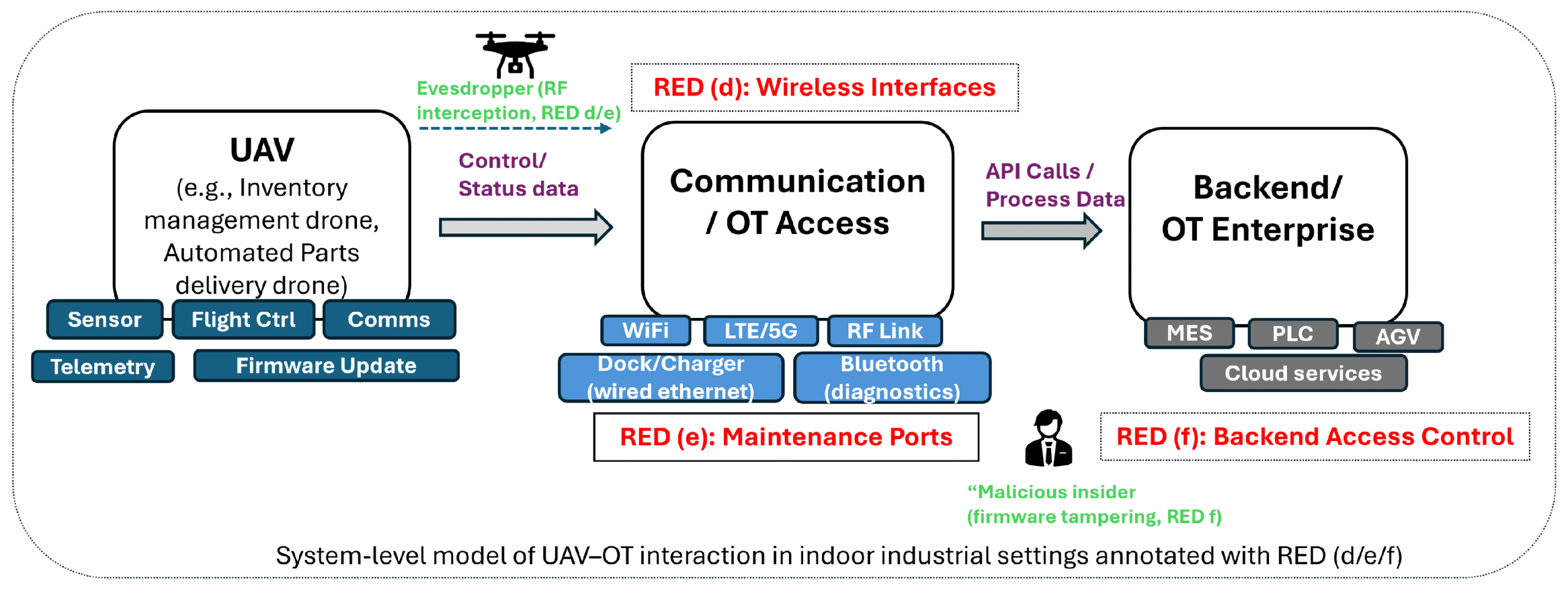The Role of AI and Human Expertise in Machinery Functional Safety Risk Assessment
Introduction
In safety engineering, conducting risk analysis is crucial but requires substantial resources, expertise, and adherence to standards like ISO 12100 and ISO 13849. This ensures machinery operates safely and meets regulatory requirements. With advancements in artificial intelligence, particularly Large Language Models (LLMs) like ChatGPT or DeepSeek the opportunity to revolutionize these traditional processes has emerged. This article discusses a novel approach that combines the strengths of human experts and AI to enhance the efficiency and accuracy of functional safety risk analyses in industrial settings.
Streamlining Risk Analysis with AI
A comprehensive safety risk analysis involves multiple critical stages: hazard identification, risk estimation, and the development of mitigation strategies. Traditionally, these stages require meticulous attention to complex machinery interactions, making the process time-consuming and expensive. Generative AI, especially LLMs, opens new possibilities for automating these complex tasks. These models excel in processing vast datasets, identifying patterns, and producing coherent, contextually relevant outputs. In safety engineering, such capabilities can notably streamline tasks like hazard identification and risk evaluation, enhancing the efficiency and effectiveness of the risk analysis process.
Human-in-the-Loop (HITL) Approach
Our proposed framework (see Figure 1) integrates a Human-in-the-Loop (HITL) approach with LLMs to overcome AI limitations, such as potential biases and the risk of generating plausible but incorrect outputs, known as hallucinations. Embedding expert oversight into the AI’s generative process ensures the reliability and compliance of the risk analysis outputs with stringent safety standards.
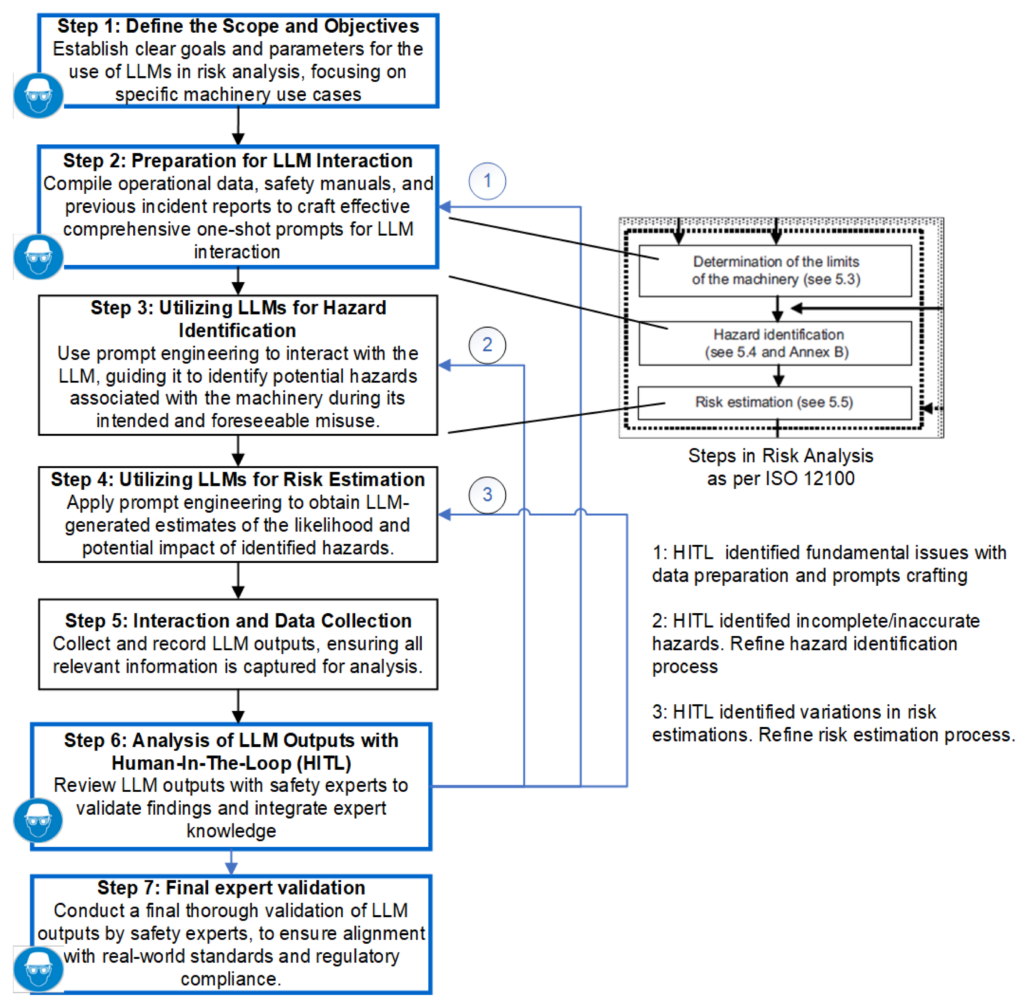
Empirical Validation Through Industrial Case Studies
The efficacy of this approach was validated through four diverse industrial case
studies involving motorized gates, autonomous transport vehicles, weaving
machines, and rotary printing presses (from the IFA report-Annex A: Examples
of Risk assessment). The results indicated substantial improvements in time
efficiency and overall accuracy. HITL involvement guaranteed that AI-generated
risk assessments were in alignment with expert-validated truths, demonstrating
the tangible benefits of integrating AI into traditional safety workflows.
LLMs are often critiqued for lacking true reasoning capabilities, excelling instead
at approximate retrieval rather than principled reasoning or planning. Despite
these limitations, when integrated with human expert judgment, LLMs can
effectively contribute to various aspects of risk analysis, including hazard
identification and risk estimation as seen in Figure 2.
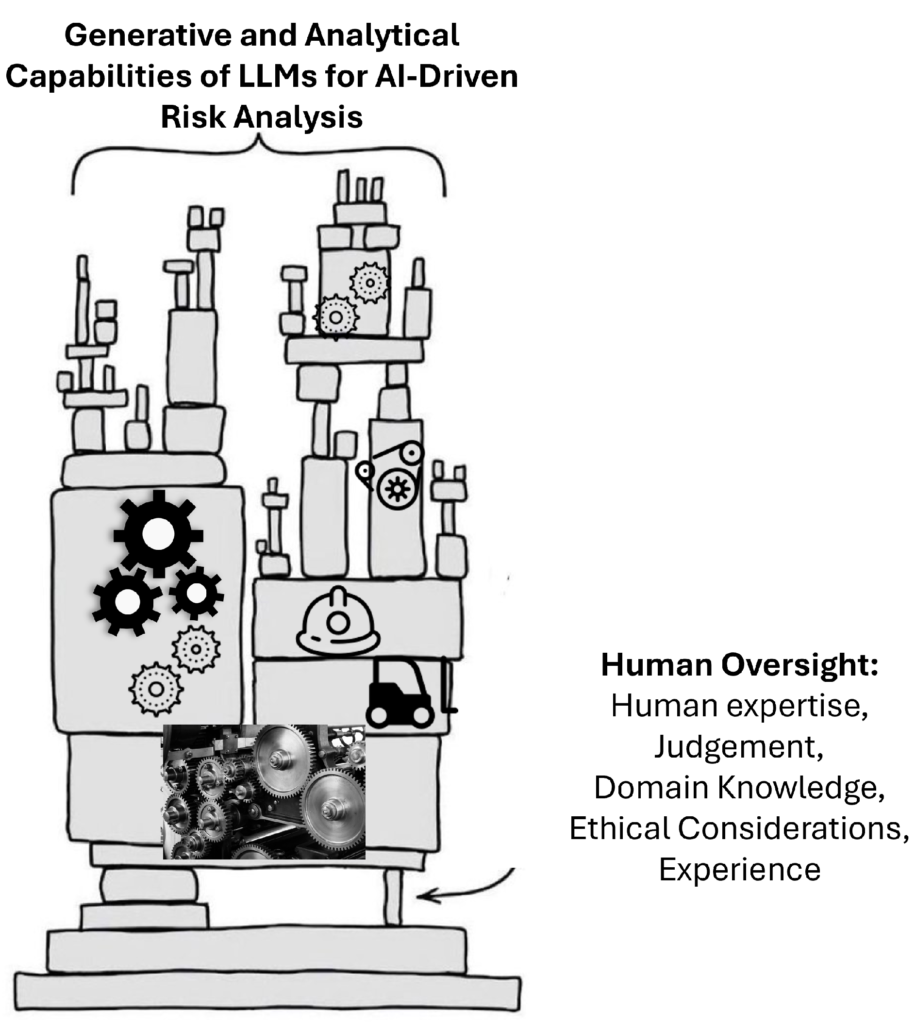
Statistical Insights and Improvements
The empirical validation demonstrates some compelling results. For instance, a correlation heatmap (Figure 3) revealed interesting dynamics between prompt length and output quality. Longer initial prompts were strongly positively correlated with accuracy, indicating that more detailed prompts tend to produce more accurate outputs. However, these longer prompts showed a weak negative correlation with time efficiency, suggesting a slight trade-off between detail and speed. On the other hand, shorter iterative prompts maintained high usability, showcasing their effectiveness in refining outputs without sacrificing quality.
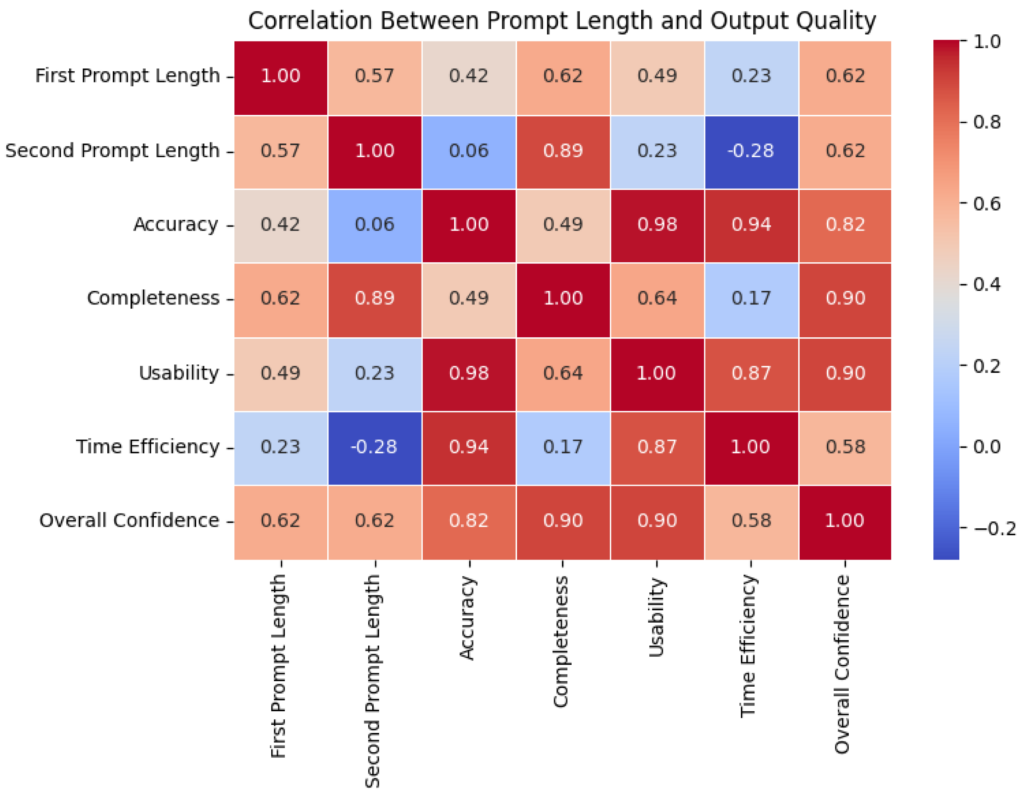
These findings emphasize the value of focused iterative prompts and expert oversight within the HITL. By strategically guiding the LLM with precise prompts and incorporating iterative expert validation, our approach aligns outputs with safety standards and practical requirements, enhancing both reliability and practicality. Compared to previous studies, our HITL framework tailored for real-life machinery functional safety risk assessment shows significant improvements in reliability, achieving higher accuracy with complete agreement with ground truths, and provides a scalable solution that complies with ISO 12100 and ISO 13849 standards.
Benefits of AI Integration in Safety Risk Analysis
The integration of AI into safety risk analysis processes provides numerous benefits:
- AI speeds up the initial phases of risk analysis, providing significant efficiency improvements.
- With expert oversight, AI-generated assessments closely adhere to established safety standards.
- The synergy between human expertise and AI capabilities fosters a more dynamic, responsive, and effective risk management environment, particularly in identifying and addressing missing edge cases.
Conclusion
Integrating AI with human expertise in machinery safety risk analysis marks a significant advancement in the field. This hybrid approach not only boosts the efficiency and accuracy of safety assessments but also ensures they meet the rigorous demands of industry standards and regulations. However, it is important to note that, it is crucial to host the LLM locally to maintain control over data privacy and system integrity.
This methodology, first introduced by Padma Iyenghar was published recently as a featured article in MDPI-Eng journal. The full open access article is available in [1].
References:
[1] Iyenghar, P. Clever Hans in the Loop? A Critical Examination of ChatGPT in a Human-in-the-Loop Framework for Machinery Functional Safety Risk Analysis. Eng 2025, 6, 31. https://doi.org/10.3390/eng6020031
Here you can find our Training and workshop offers on Functional safety and Artificial Intelligence, and also here about our risk assessment consultancy for machinery.

